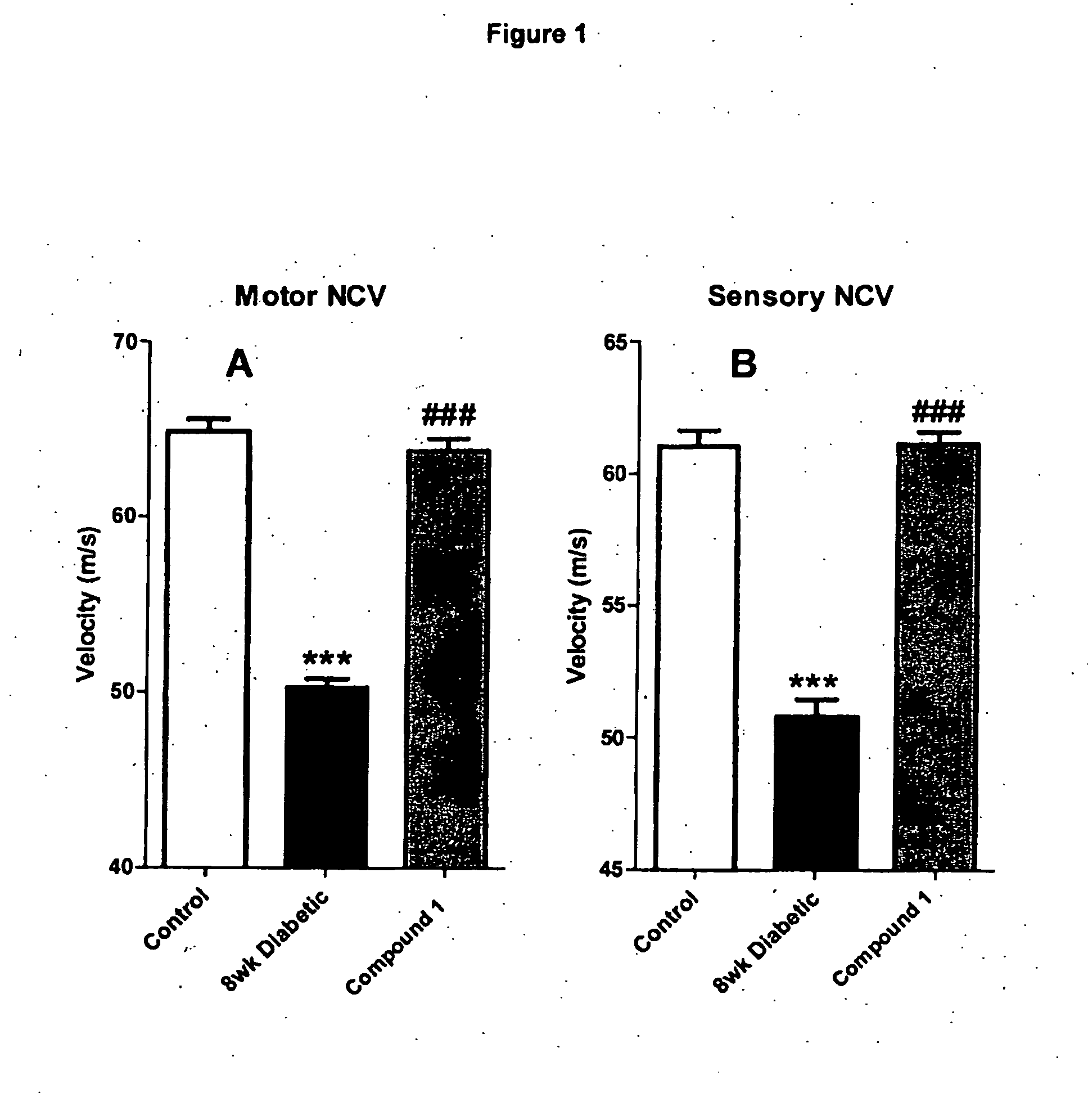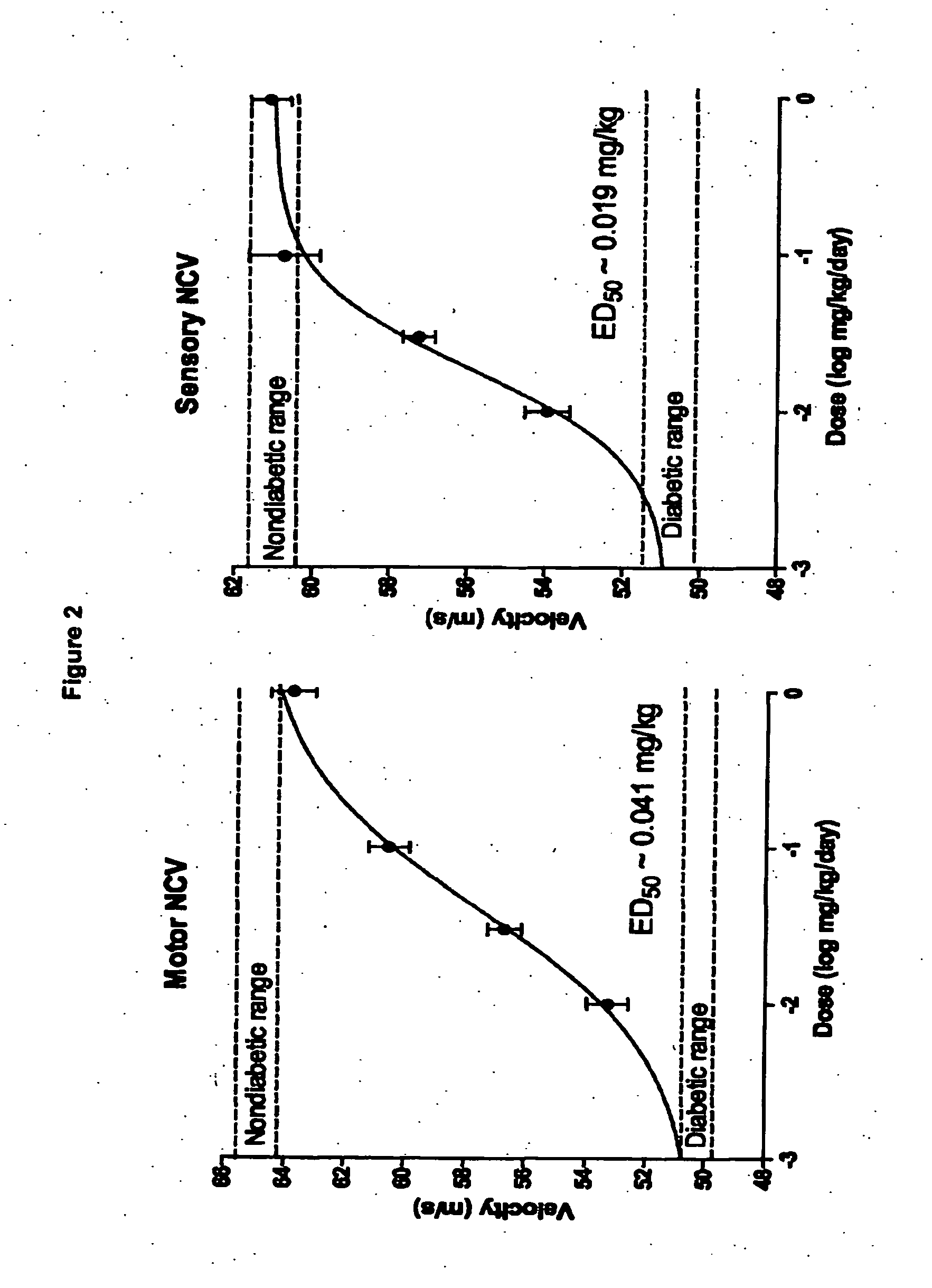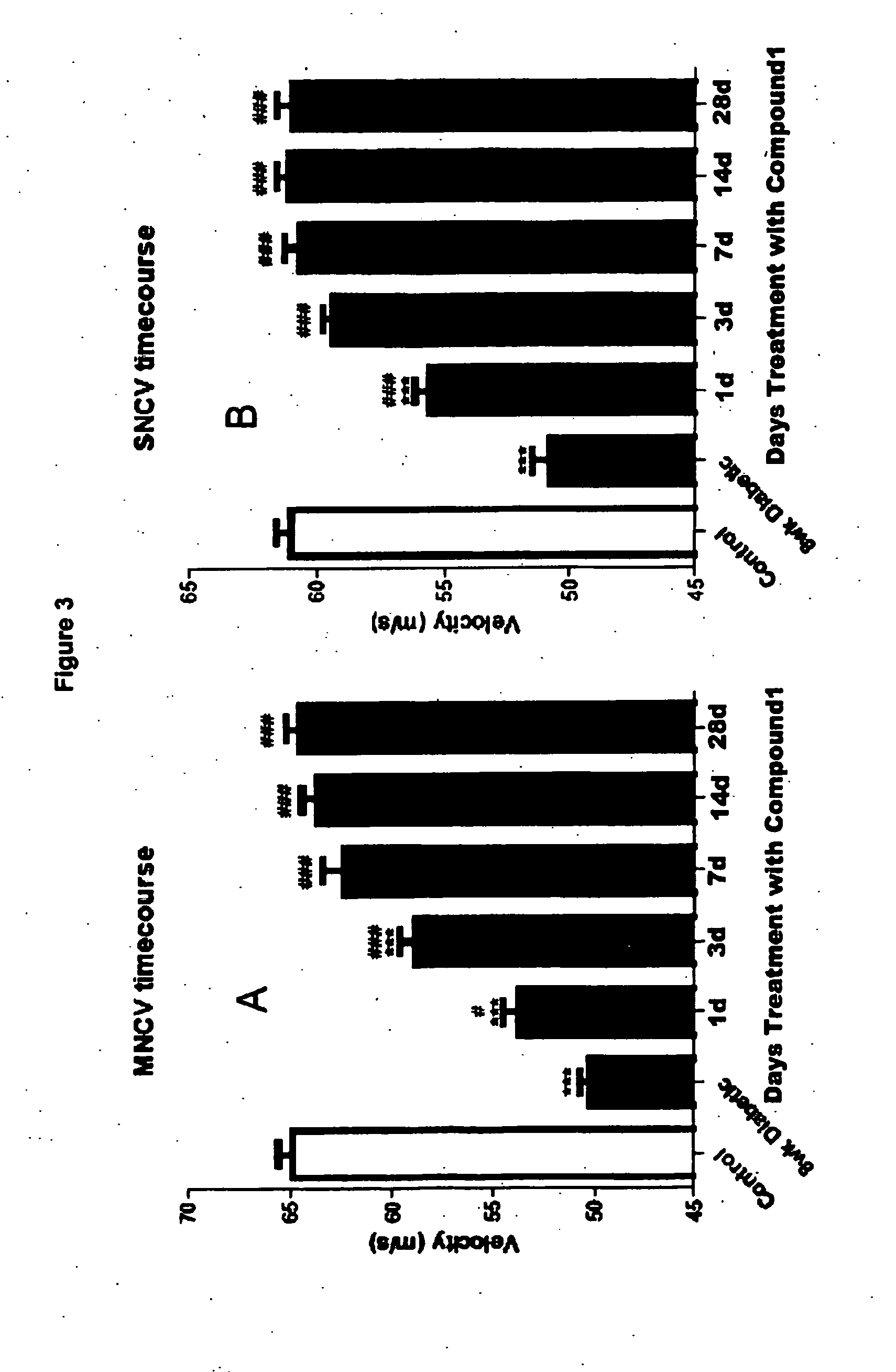Methods and Compositions For Improved Nerve Conduction Velocity
a nerve conduction velocity and composition technology, applied in the field of selective angiotensin ii type 2 (at2) receptor antagonists, can solve the problems of affecting the ncv of the peripheral nerve, affecting the peripheral nerve, and no treatment may be available for treating the underlying disease or disorder, so as to increase increase the ncv, and improve the nerve conduction velocity
- Summary
- Abstract
- Description
- Claims
- Application Information
AI Technical Summary
Benefits of technology
Problems solved by technology
Method used
Image
Examples
example 1
Restoration of Sensory and Motor Nerve Conduction in Diabetic Rats
[0138]Methods: Diabetes was induced in mature (19 week old) male Sprague-Dawley by a single STZ injection (40-45 mg / kg i.p.). The diabetic state was monitored weekly using commercially available test strips for blood (tail vein) and urine glucose levels. Body weight was also monitored daily. The criteria for the diabetic state were: blood glucose >19.9 mM, glycosuria, and no evidence of body weight gain. The duration of diabetes was 8 weeks, and treatment was given for the last 2 weeks with the sodium salt of Compound 1 (1.048 mg / kg dissolved in water, daily by gavage).
[0139]In final experiments, rats were anaesthetized with thiobutabarbital (50-100 mg kg-1 i.p.) The trachea was cannulated for artificial respiration. The level of anaesthesia was monitored by observing any reaction of blood pressure to manipulation, supplementary thiobutabarbital anaesthetic being given as necessary. As described in detail by Cameron e...
example 2
Dose Response for Compound 1 Sodium Salt in Restoration of Sensory and Motor Nerve Conduction in Diabetic Rats
[0144]Methods: Diabetes was induced in mature (19 week old) male Sprague-Dawley by a single STZ injection (40-45 mg / kg i.p.). The diabetic state was monitored weekly using commercially available test strips for blood (tail vein) and urine glucose levels. Body weight was also be monitored daily. The criteria for the diabetic state were: blood glucose >19.9 mM, glycosuria, and no evidence of body weight gain. The duration of diabetes was 8 weeks, and treatment was given for the last 2 weeks with Compound 1 (groups of 10 diabetic rats given the sodium salt of Compound 1 at doses of 0.1048, 0.0349 or 0.01048 mg / kg dissolved in water, daily by gavage).
[0145]In final experiments, rats were anaesthetized with thiobutabarbital (50-100 mg kg-1 i.p.) The trachea was cannulated for artificial respiration. The level of anaesthesia was monitored by observing any reaction of blood pressur...
example 3
Selectivity of Compound 1 for the AT2 Receptor
[0148]Selectivity of Compound 1 for the AT2 receptor was determined in an in vitro human AT1 and AT2 receptor binding assay.
Methods: General ProceduresReferenceAssayOriginCompoundBibliographyAT1 (h)human recombinantsaralasinBergsma et(CHO cells)al. (1992);Biochem. Biophys.Res. Commun. 183:989-995AT2 (h)human recombinantsaralasinTsuzuki et al.(Hela cells)(1994), Biochem.Biophys. Res.Commun. 200:1449-1454
Experimental ConditionsMethod ofAssayLigandConc.Non SpecificIncubationDetectionAT1[125I][Sar1, Ile8]-AT II0.05 nMangiotensin II 60 min. / 37° C.Scintillation(h)(10 μM)countingAT2[125I]CGP 42112A0.05 nMangiotensin II180 min. / 37° C.Scintillation(h)(1 μM)counting
[0149]Analysis and Expression of Results
[0150]The specific ligand binding to the receptors is defined as the difference between the total binding and the nonspecific binding determined in the presence of an excess of unlabelled ligand.
[0151]The results are expressed as a percent of cont...
PUM
| Property | Measurement | Unit |
|---|---|---|
| time | aaaaa | aaaaa |
| time | aaaaa | aaaaa |
| time | aaaaa | aaaaa |
Abstract
Description
Claims
Application Information
 Login to View More
Login to View More - R&D
- Intellectual Property
- Life Sciences
- Materials
- Tech Scout
- Unparalleled Data Quality
- Higher Quality Content
- 60% Fewer Hallucinations
Browse by: Latest US Patents, China's latest patents, Technical Efficacy Thesaurus, Application Domain, Technology Topic, Popular Technical Reports.
© 2025 PatSnap. All rights reserved.Legal|Privacy policy|Modern Slavery Act Transparency Statement|Sitemap|About US| Contact US: help@patsnap.com



